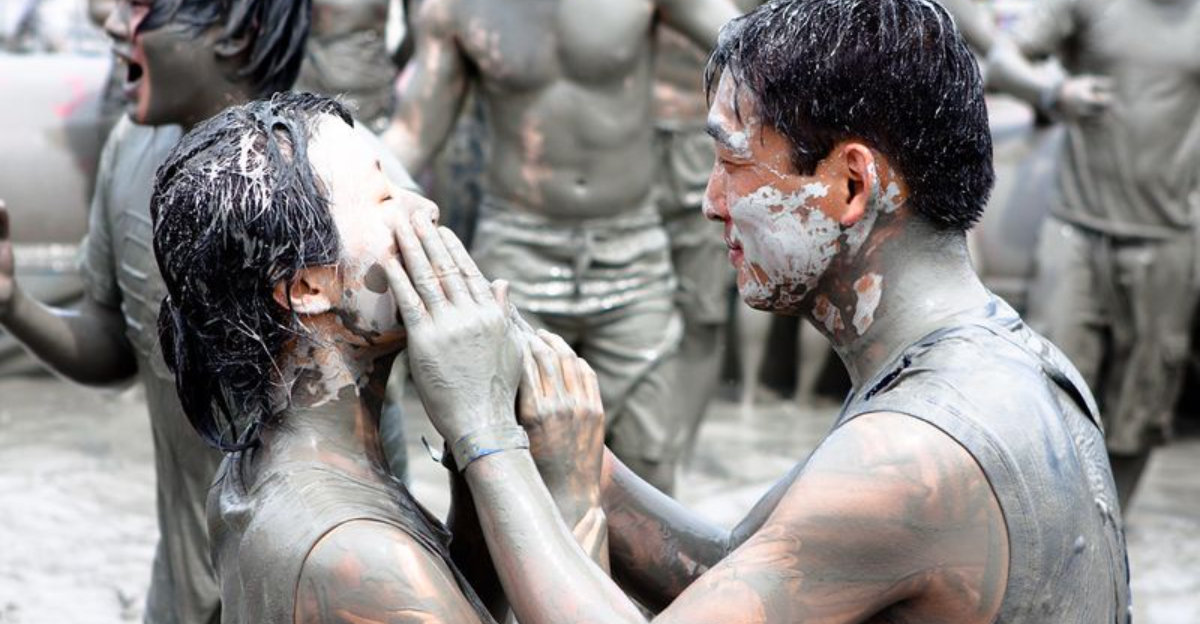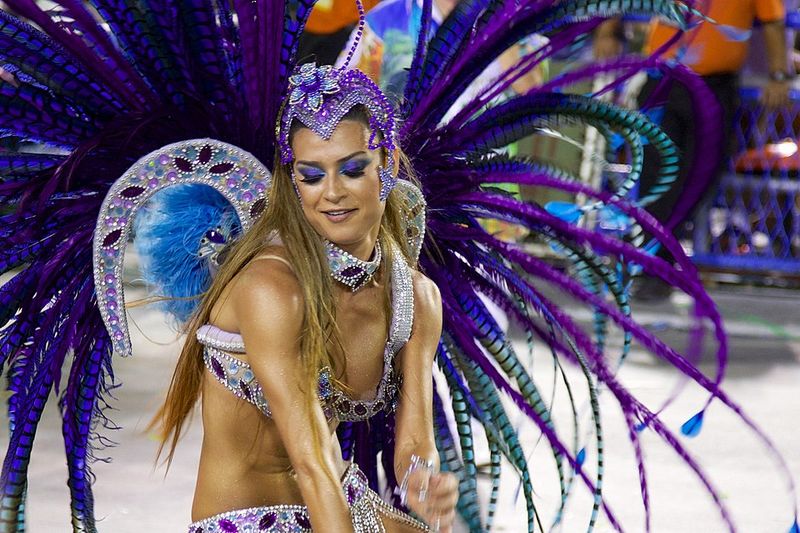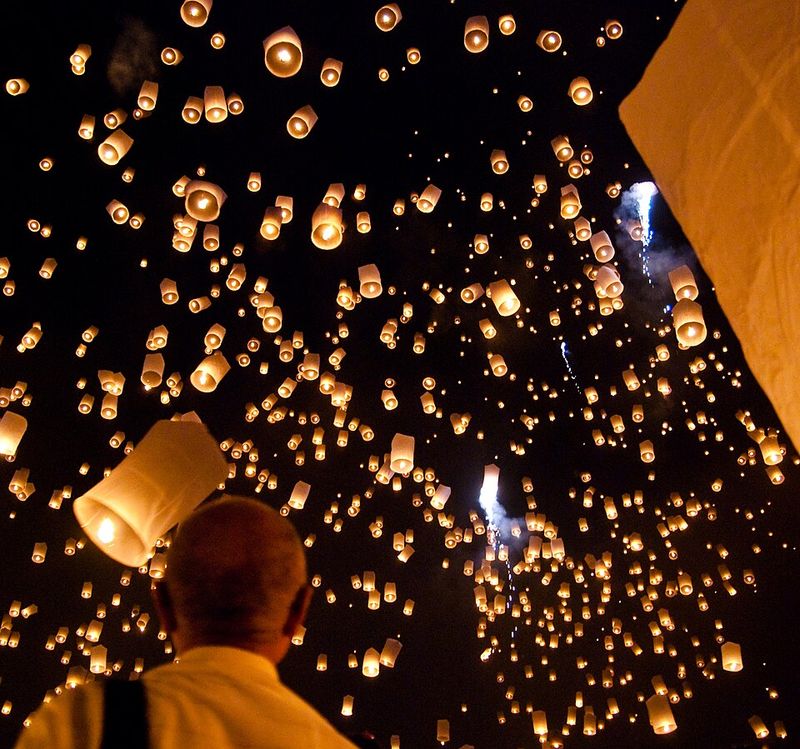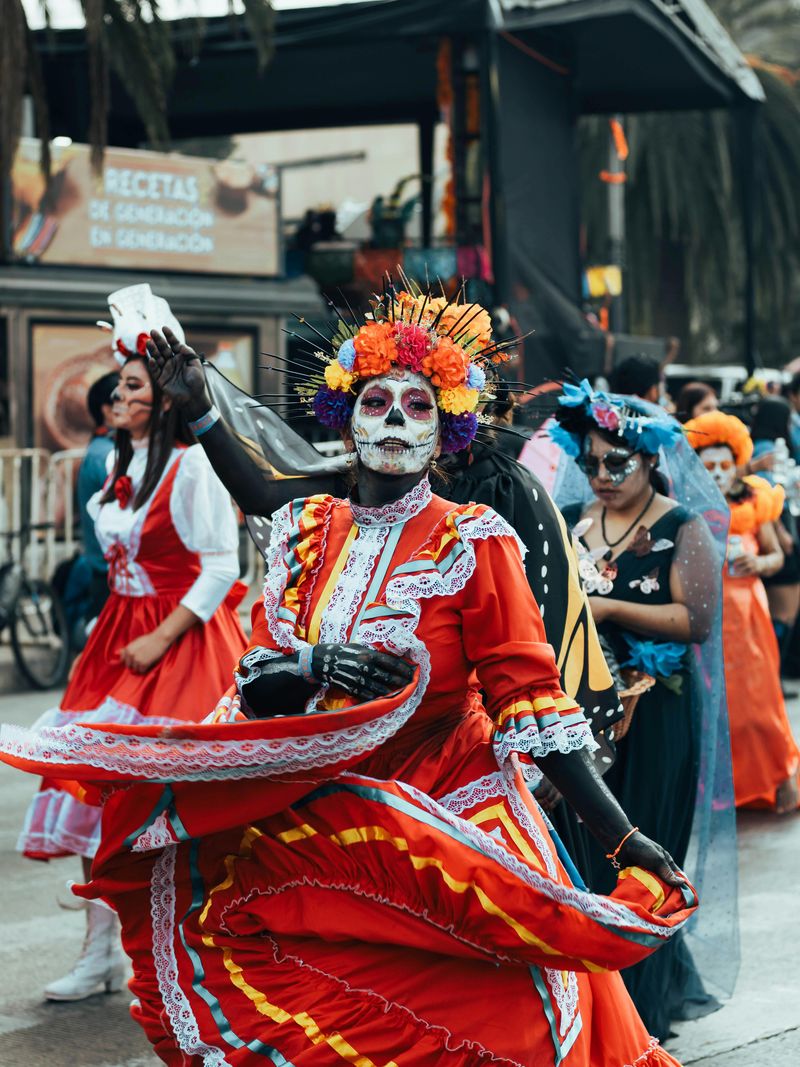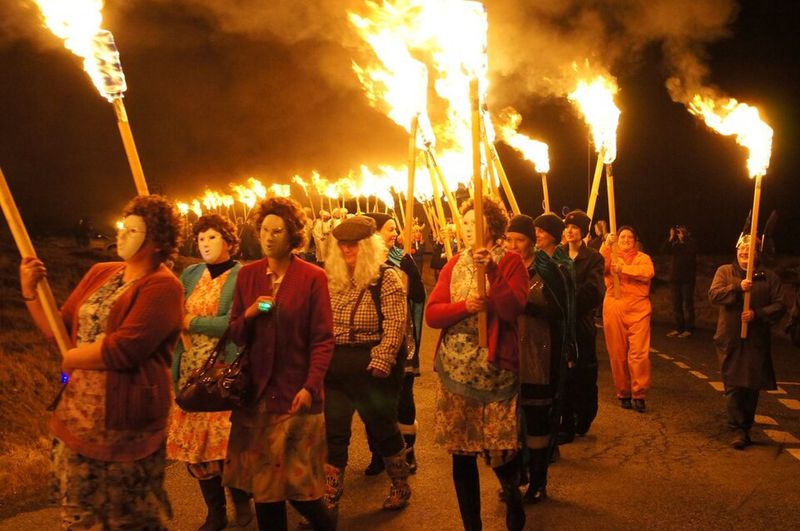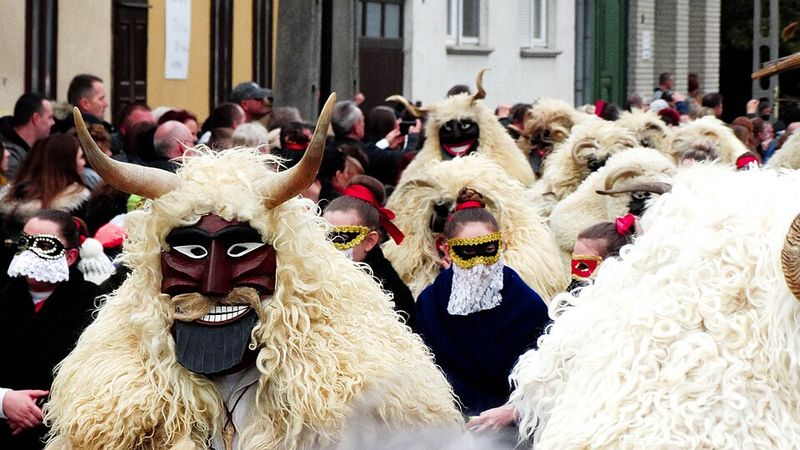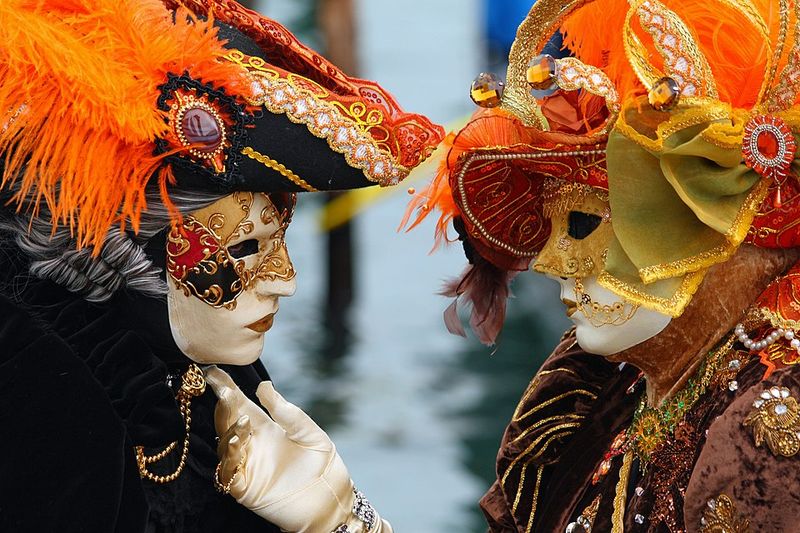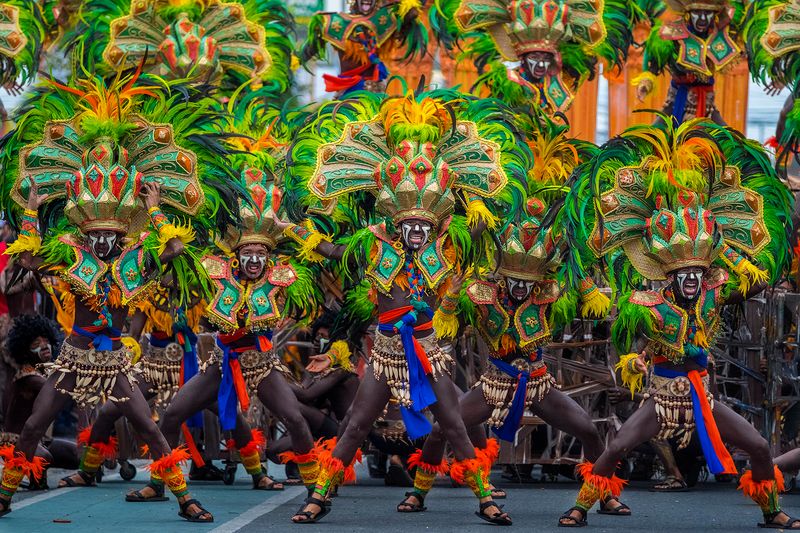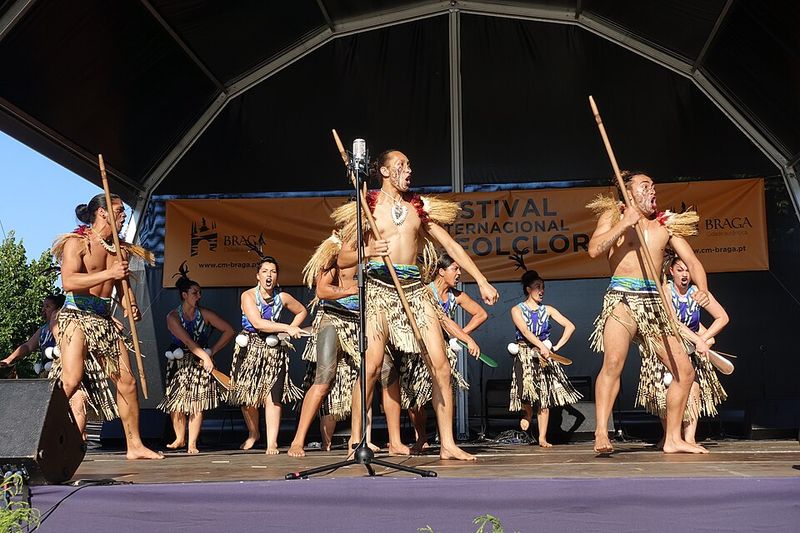Looking for celebrations that leap off the calendar and into your memory? These countries host festivals where myth, music, and community erupt into color-drenched streets and soul-stirring rituals. Whether you crave torchlit parades, skyfuls of lanterns, or ancestral ceremonies under the stars, this guide pinpoints the world’s most uniquely immersive festivities. Read on to find your next cultural adventure—and a celebration you’ll still be talking about years later.
1. India
India’s festival calendar is unmatched in diversity and immersive ritual. From Holi’s exploding clouds of gulal to Diwali’s torch-lit nights, celebrations fold devotion, theatre, and hospitality into living streets. In Kerala, temple drums thunder for Thrissur Pooram, while North Indian towns stage Ramlila epics with fireworks and puppetry. Visitors can join processions, share prasad, and witness rituals that feel both intimate and vast. Ayurveda-inspired purification rites, kite wars in Gujarat, and boat races in Kerala extend the spectrum beyond familiar highlights. With every region offering its own flavour, festivals become moving classrooms of story, food, and faith. Travel guides consistently rank India for depth, color, and participation. Expect spectacle with soul—where you don’t just watch a festival, you become part of it.
2. Spain
Spain’s festivals ping-pong between sacred ritual and joyous mischief. La Tomatina turns Buñol’s lanes into a tomato-red canvas, while Pamplona’s Running of the Bulls tests nerve and tradition in equal measure. Catalonia’s correfocs unleash fireworks and dancing devils through medieval streets, and human towers (castells) rise improbably skyward. In Galicia, bagpipes serenade torchlit romerías, and Basque towns stage idiosyncratic seasonal rites. You’ll find parades, saints’ days, and avant-garde twists on folklore layered across the calendar. Travelers praise Spain for regional character—every province carries its own festival DNA. Eat, dance, dodge sparks, and embrace late-night plazas where community feels like a family reunion. It’s theatrical, deeply rooted, and gloriously unpredictable.
3. Brazil
Brazil’s festival heartbeat is exuberant and communal. Carnival in Rio draws millions into a river of samba, sequins, and towering allegorical floats, but celebrations pulse far beyond the Sambadrome. Salvador channels Afro-Brazilian rhythms into electric trios; Olinda’s giant puppets bob over cobblestones; and drumlines echo through coastal nights. Indigenous, African, and European strands weave a tapestry that feels both spontaneous and meticulously crafted. Street blocos transform entire neighborhoods into dance floors where strangers become friends. Off-season, June Festivals (Festas Juninas) ignite rural squares with forró, bonfires, and corn treats. Travelers come for spectacle but stay for connection—the rhythm is participation, not performance. Brazil’s calendar is a choreography of joy where culture, music, and motion fuse into living art.
4. Japan
Japan’s matsuri culture intertwines elegance and intensity. In Kyoto’s Gion Matsuri, monumental floats glide through heat-shimmered streets, their tapestries whispering centuries of craft. Lantern festivals cast warm halos around shrines, while Hadaka Matsuri channels raw vitality as loincloth-clad participants jostle for luck. Seasonal rituals align with nature’s pulse—cherry blossoms, harvest moons, snow-shrouded shrines. Fire-lit processions, taiko thunder, and portable mikoshi shrines invite spectators to become carriers of tradition. Even the quiet moments—sipping amazake or watching dancers trace precise arcs—feel ceremonial. Festival listings celebrate Japan for symbolism you can touch, taste, and join. Expect reverence meeting revelry, where the past steps into the present and invites you to walk alongside it.
5. Thailand
Thailand stages celebrations where spirituality and joy share the same stage. Yi Peng in Chiang Mai launches constellations of lanterns into the night, a breathtaking meditation on release and renewal. Songkran transforms streets into playful waterways, blessing the new year with splashes and smiles. Riverbanks glow for Loy Krathong, as floral floats carry wishes downstream. In temple courtyards, processions weave incense, dance, and drum into luminous evenings. Visitors are welcomed to participate—folding banana leaves, releasing lanterns, or joining water play with locals. Guides consistently rank Thailand for nature-linked rituals and generous hospitality. You’ll leave with wet clothes, full heart, and a pocket of stories stitched with light, water, and community.
6. Mexico
Mexico’s festivals entwine remembrance, rhythm, and artistry. Día de los Muertos transforms towns with marigold paths, candlelit vigils, and altars layered with food, photos, and love. Parades swirl with calavera makeup and papier-mâché skeletons, a jubilant nod to life’s continuum. In Oaxaca and Pátzcuaro, processions glide between homes and cemeteries, where music mingles with whispered stories. Elsewhere, Guelaguetza celebrates Indigenous dance and community exchange, while fireworks castles spin at night ferias. The blend of pre-Hispanic roots and colonial echoes yields rituals both intimate and spectacular. Travelers praise the sensory depth—aromas of pan de muerto, trumpets in the dark, petals beneath your feet. Mexico’s festival soul is memory made visible.
7. Scotland (UK)
Scotland’s festival charm thrives in windswept authenticity. Up-Helly-Aa ignites Shetland’s winter with Viking pageantry, torchlit marches, and a climactic longship blaze. In the Highlands and islands, small communities stage fierce traditions—fire, folk memory, and camaraderie stitched into cold nights. Beltane in Edinburgh reimagines ancient rites with drums, flame, and theatrical flair on Calton Hill. Expect fewer crowds, deeper conversations, and a sense that you’ve stepped behind the curtain. Lists of weird-and-wonderful festivals often spotlight these rugged rituals for their locality and spectacle. Come for the bonfires, stay for the ceilidh warmth and peat-smoke stories that linger long after the embers fade.
8. Austria
Austria’s festivals channel Alpine folklore into living theatre. Krampusnacht sends horned tricksters clanging through snowy streets, their carved masks and pelts rattling the nerves and delighting the crowds. In mountain villages, Advent markets glow with spiced aromas while brass bands play under frosted eaves. Perchten runs, harvest blessings, and maypole rites carry agrarian memory forward. These aren’t mass spectacles; they’re intimate rituals that feel rooted and real. Travelers seeking authenticity find it here—close enough to see hand-hewn details and taste village pastries still warm. Guides hail Austria for myth-rich, community-led celebrations far from the mainstream. Expect folklore you can follow with your feet, breath steaming in cold night air.
9. South Korea
South Korea mixes playful immersion with luminous tradition. The Boryeong Mud Festival turns a coastal town into a gleeful mess—slides, obstacle courses, and skin-benefit mud drawing global crowds. Lantern festivals glow around temples, painting winter skies with soft, meditative light. In Andong, mask dance dramas animate Confucian heritage, while spring blossoms frame local celebrations. Food stalls, K-pop stages, and community workshops add modern sparkle to age-old rhythms. Visitors aren’t bystanders—you’ll be splashed, stamped, or serenaded. Festival lists praise Korea for interactivity and visual punch. Come ready to move, laugh, and bow; you’ll leave with shoes full of mud and a heart full of light.
10. Hungary
Hungary’s festival identity revels in masks, fire, and village intimacy. At Busójárás in Mohács, fur-clad figures with horned wooden masks clatter through streets to chase winter away, bells ringing like thunder. Bonfires crackle, plum brandy warms hands, and folk bands stitch rhythm into the cold. Elsewhere, Tokaj harvest feasts and Danube town fairs spotlight culinary tradition with dance. These gatherings feel close-knit yet welcoming, giving travelers front-row access to Central European folklore. Listings often single out Hungary for ritual intensity without the crush of mega-crowds. Expect raw charm, handcrafted details, and stories smoldering like embers in the night.
11. Italy
Italy’s festivals distill pageantry, place, and deep time. Venice Carnival floats masked elegance across fog-kissed canals, while Siena’s Palio thunders through a medieval square in a blur of contrade flags. Smaller towns stage jousts, citrus battles in Ivrea, and saints’ day processions with incense and brass. Each celebration is a conversation between city and century—craft, cuisine, and community braided together. Guides praise Italy for regional breadth and architectural drama as the ultimate backdrop. Visitors dine on street fritters, sip local wines, and watch history parade by in silk and saddle. It’s spectacle with roots, beauty with bite.
12. Colombia
Colombia celebrates with rhythm that moves the pavement. Carnaval de Barranquilla explodes in cumbia, marimonda masks, and dazzling floats that braid Indigenous, African, and European threads. In Pasto, the Black and White Carnival splashes cities with paint and playful inversion, while flower festivals brighten Medellín with fragrant artistry. Music is the spine; community, the heartbeat. Visitors praise the warmth—parades where you’re welcomed to dance, not just watch. Festival round-ups spotlight Colombia’s color and cultural layering, from drumbeats to storytelling masks. Expect late nights, street feasts, and a thousand photos that still can’t catch the music in the air.
13. Philippines
The Philippines turns devotion into dance. Sinulog in Cebu pulses with drumlines and waves of synchronized movement honoring the Santo Niño, while Kalibo’s Ati-Atihan paints faces and streets in fierce black-and-gold. MassKara in Bacolod adds radiant smiles and sequined masks to the archipelago’s carnival spirit. Parades are participatory, neighborhoods are welcoming, and food stalls tempt with lechon and sweet rice treats. Festival blogs highlight the islands’ inclusive energy and kaleidoscopic visuals. You’ll join processions, learn chants, and feel a nation’s faith carried by rhythm. It’s community you can dance to—joyous, heartfelt, unforgettable.
14. New Zealand
New Zealand’s unique festival spirit draws power from land, sky, and story. Matariki, the Māori New Year, welcomes the Pleiades with community feasts, remembrance, and star-watching—an intimate blend of astronomy and ancestry. Kapa haka events resound with harmonies and haka, while regional celebrations highlight crafts, kai, and storytelling by firelight. Festival lists praise the country’s fusion of contemporary creativity with Indigenous roots, set amid cinematic landscapes. Crowds are smaller, encounters deeper, and the night sky feels close enough to touch. Come for quiet awe and leave with connections that outlast the season.
15. Morocco
Morocco’s festivals braid spiritual rhythm with marketplace spectacle. Gnawa gatherings pulse with trance-inducing guembri bass and metallic qraqeb, while Sufi moussem pilgrimages unite devotion and communal feast. The Rose Festival perfumes the Valley of Roses with parades and petals, and date harvest fairs animate desert towns with camel shows and songs. In cities, squares swell with storytellers, acrobats, and lantern-lit food stalls. Visitors find ceremonies accessible yet profound, with hospitality woven into every invitation. Guides laud Morocco for sensory richness—spice-laden air, embroidered costumes, and night skies rinsed clean by desert winds. Expect a festival experience that feels ancient, intimate, and alive.
